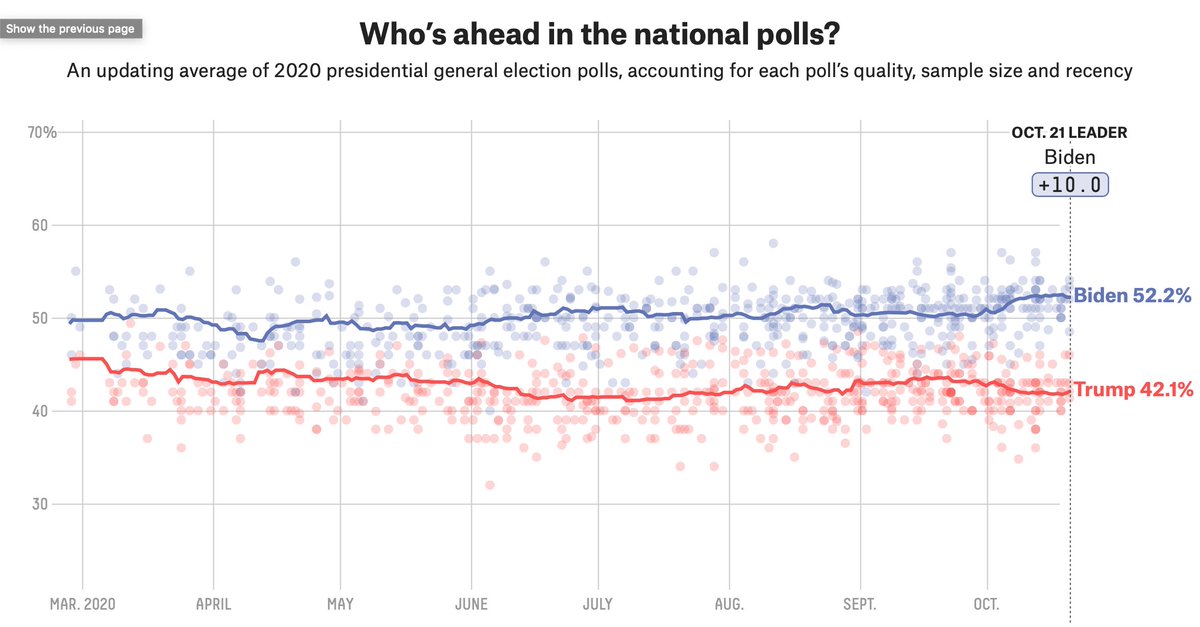
Hey folks, our national polling average is now Biden +9.2, as compared with Biden +9.7 yesterday. What caused the change given that the national tracking polls were decent for Biden this AM? It's older polls dropping out of the average.
projects.fivethirtyeight.com/polls/presiden…
projects.fivethirtyeight.com/polls/presiden…

Following major events like debates, our average shifts forward the window of time that it considers, and more recent polls have indeed been more consistent with a Biden lead of about 9 points nationally; haven't seen as many of those Biden +14s lately.
It's not perfect, and we'll probably tinker with these mechanics post-2020, but keep in mind that our averages are really a blend of an RCP style average over a fixed window of time (where this sort of thing happens a lot) and a HuffPost/Pollster style trendline.
I'd also note that this didn't have much effect on our *forecast*, which is mostly based on state polls and uses different mechanics for handling national polls to the extent it uses them at all. It shows Biden +8.0 in the popular vote, essentially unchanged from +8.1 yesterday. 

• • •
Missing some Tweet in this thread? You can try to
force a refresh





